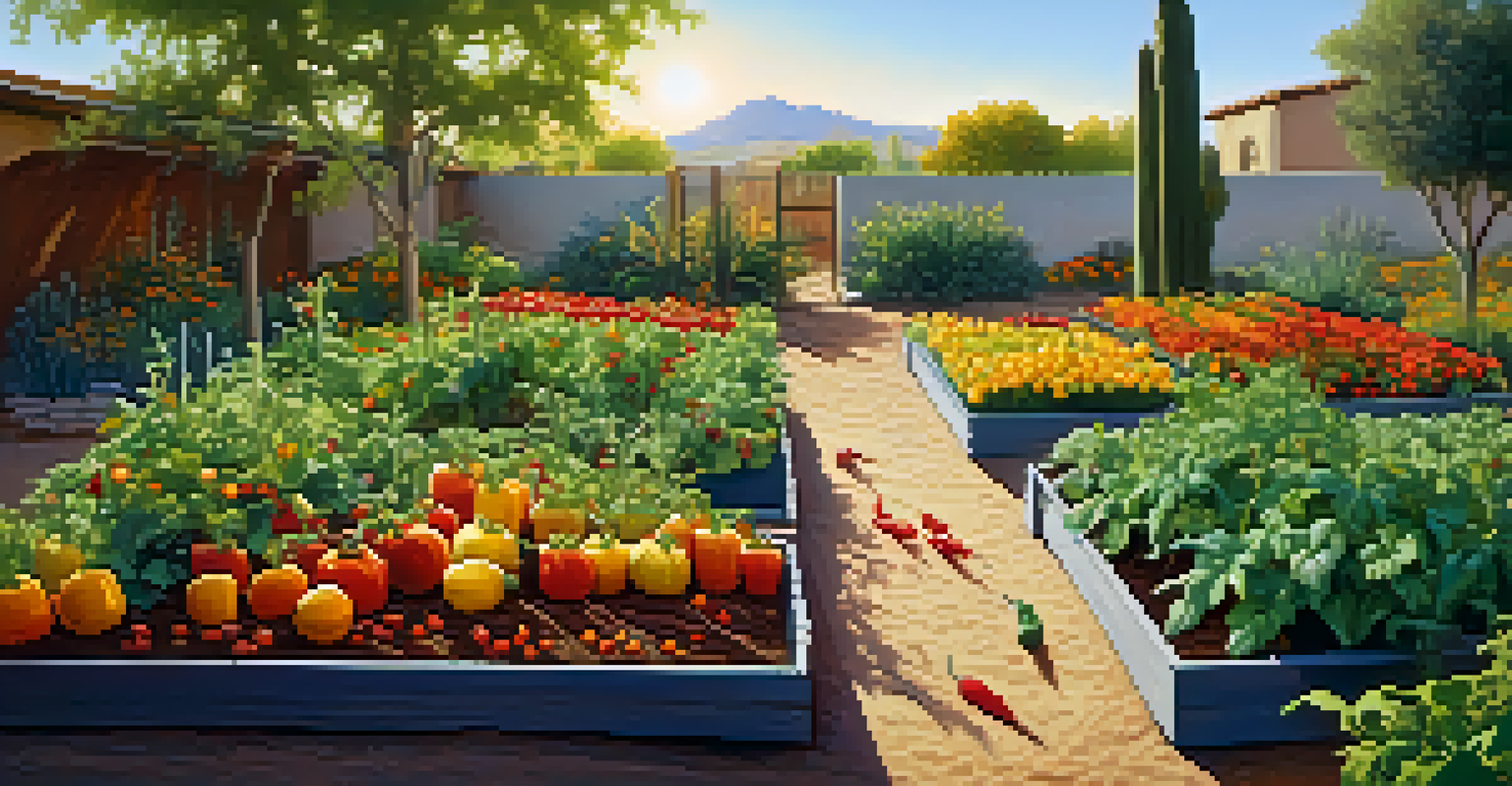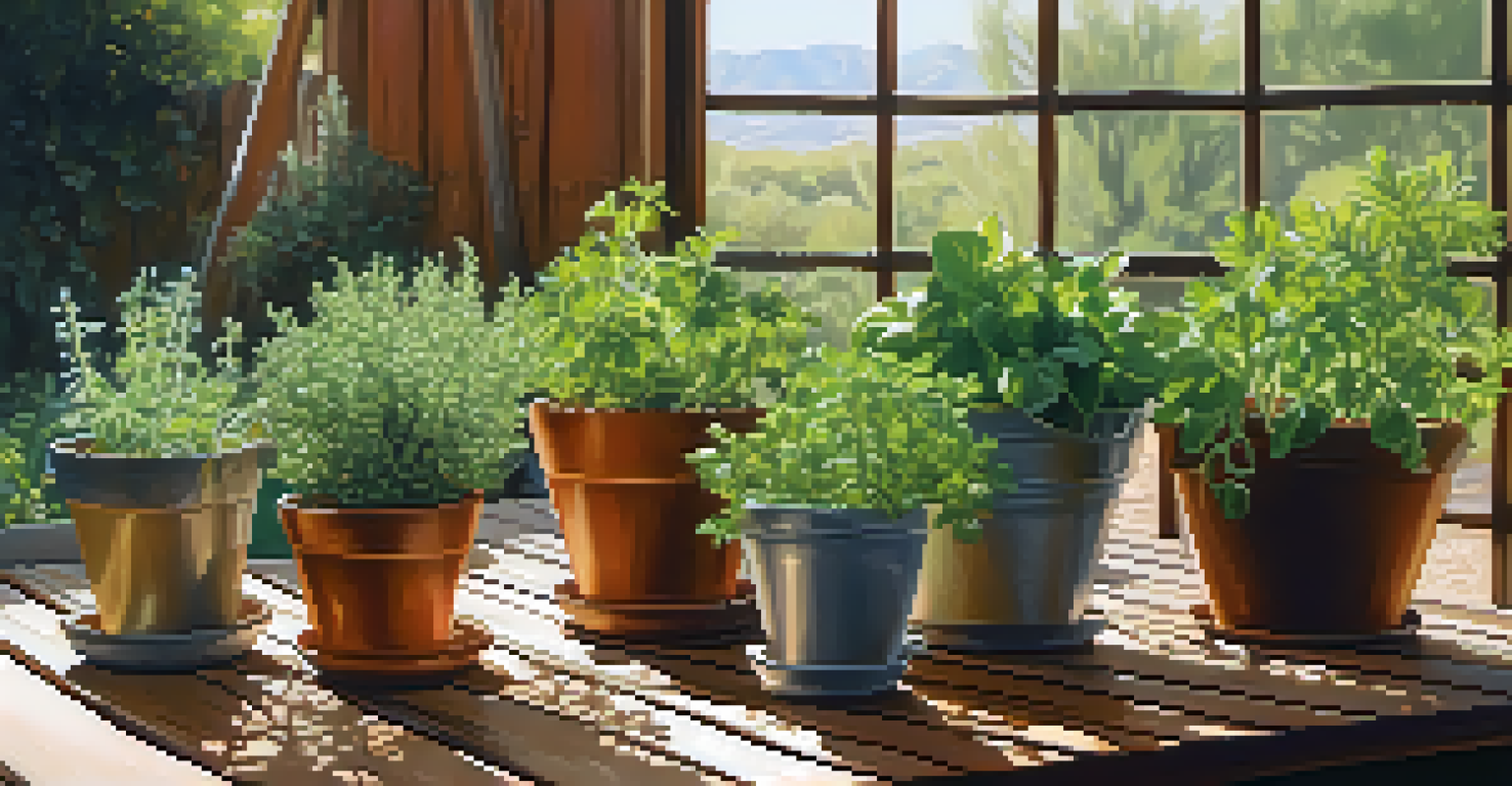Seasonal Gardening in Phoenix: What to Plant and When

Understanding Phoenix's Unique Climate for Gardening
Phoenix is known for its hot desert climate, which can be a challenge for gardeners. The intense sun and limited rainfall mean that understanding the seasons is crucial for successful gardening. With temperatures soaring in summer and mild winters, the timing of your planting can make all the difference.
Gardening is a way of showing that you believe in tomorrow.
Many first-time gardeners in Phoenix may not realize that there are two main growing seasons: a warm season and a cool season. The warm season typically runs from March to October, while the cool season spans from November to February. Knowing these seasons helps in selecting the right plants to thrive in this unique environment.
With a little planning, you can cultivate a thriving garden year-round. Whether you're growing vegetables, herbs, or flowers, understanding Phoenix's climate will help you make informed decisions about what to plant and when.
Best Plants for the Cool Season in Phoenix
During the cooler months, certain vegetables and flowers perform exceptionally well in Phoenix. Spinach, lettuce, and broccoli are just a few examples of leafy greens that thrive in cooler temperatures. Planting these crops from October to February can yield a bountiful harvest.

In addition to vegetables, consider planting flowering plants like pansies and snapdragons, which can brighten up your garden during the cooler months. These flowers not only add beauty but also attract beneficial pollinators to your garden, enhancing its overall health.
Understand Phoenix's Growing Seasons
Phoenix has two main growing seasons—warm and cool—making it essential for gardeners to know when to plant.
To make the most of your cool season garden, focus on selecting frost-resistant varieties. This way, you can enjoy a colorful and productive garden even as temperatures drop.
Warm Season Vegetables to Grow in Phoenix
As the temperatures rise around March, it’s time to shift your focus to warm-season crops. Vegetables like tomatoes, peppers, and squash thrive in the heat and can be planted from March through June for a successful harvest. These plants not only love the sun but also produce abundantly in the right conditions.
The love of gardening is a seed once sown that never dies.
When planting warm-season vegetables, consider using raised beds or containers to help with drainage and soil temperature. This approach can enhance growth and reduce the risk of root rot, which can be an issue in the summer heat.
Don’t forget to regularly monitor your plants for water needs. The hot sun can dry out the soil quickly, so consistent watering is key to keeping your warm-season garden flourishing.
Herbs to Plant for Year-Round Flavor
Herbs are a fantastic addition to any garden, and many thrive in Phoenix's climate. Basil, cilantro, and rosemary are just a few herbs that can be planted in both the cool and warm seasons. Planting them in pots allows for easy access and the chance to move them to optimal sunlight.
Growing herbs not only provides fresh flavors for your cooking but also attracts beneficial insects that can help control pests. For instance, planting dill can attract ladybugs, which are natural predators of aphids.
Choose the Right Plants for Success
Selecting appropriate plants for both cool and warm seasons can enhance your garden's productivity and beauty.
Make sure to harvest herbs regularly to encourage new growth. This practice keeps your plants healthy and productive, ensuring you have a fresh supply of herbs throughout the year.
Timing Your Planting for Success
Timing is everything in gardening, especially in a place with such extreme temperatures like Phoenix. To ensure the best growth, align your planting schedule with the seasons. Use the local frost dates as a guide; typically, the last frost occurs in late March, making it safe to plant warm-season crops afterward.
For cool-season crops, planting in late September or early October allows them to establish before the chill sets in. Keeping an eye on weather forecasts can also help you make adjustments as needed, especially if unexpected cold snaps occur.
By staying attuned to the seasonal changes and adjusting your planting schedule accordingly, you can maximize your garden's potential and enjoy a fruitful yield.
Soil Preparation Tips for Phoenix Gardens
Healthy soil is the foundation of any successful garden. In Phoenix, the soil can often be sandy or rocky, making it essential to amend it before planting. Adding organic matter, such as compost, can improve soil structure and provide essential nutrients for your plants.
Consider testing your soil pH to determine what amendments might be necessary. Most vegetables and herbs prefer a slightly acidic to neutral pH, so adjusting your soil accordingly can lead to better growth and yields.
Effective Watering is Crucial
Implementing efficient watering strategies, such as drip irrigation, is vital for maintaining healthy plants in Phoenix's dry climate.
Regularly mulching your garden beds also helps retain moisture and regulate soil temperature, which is crucial in the heat of Phoenix summers. This practice not only conserves water but also suppresses weeds, giving your plants the best chance to thrive.
Watering Strategies for Desert Gardening
Water management is vital for successful gardening in the Phoenix desert. With high evaporation rates, it’s essential to establish a consistent watering schedule. Early morning is the best time to water, as it reduces evaporation and gives plants a chance to absorb moisture before the heat of the day sets in.
Drip irrigation systems can be particularly effective in Phoenix gardens. They deliver water directly to the plant roots, reducing waste and ensuring that your plants receive the hydration they need without over-saturating the soil.

Be mindful of your plants' specific water needs, as different species require varying amounts of moisture. This awareness can help you maintain a healthy garden while conserving water—a precious resource in the desert.
Enjoying the Fruits of Your Labor: Harvesting Tips
After all your hard work, the time will come to reap the rewards of your gardening efforts. Harvesting at the right time is crucial for enjoying the best flavor and texture. For example, picking tomatoes when they are fully ripe ensures maximum sweetness and juiciness.
Regular harvesting encourages plants to produce more, so don’t hesitate to pick your vegetables and herbs frequently. This practice keeps your plants healthy and promotes continuous growth throughout the season.
Don’t forget to enjoy the process! Gardening is not just about the end result; it’s also about the joy of nurturing your plants and watching them thrive in the unique Phoenix climate.